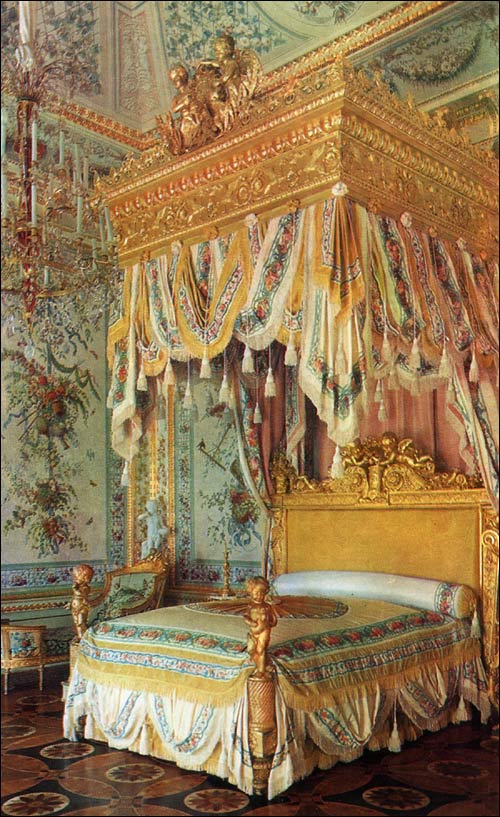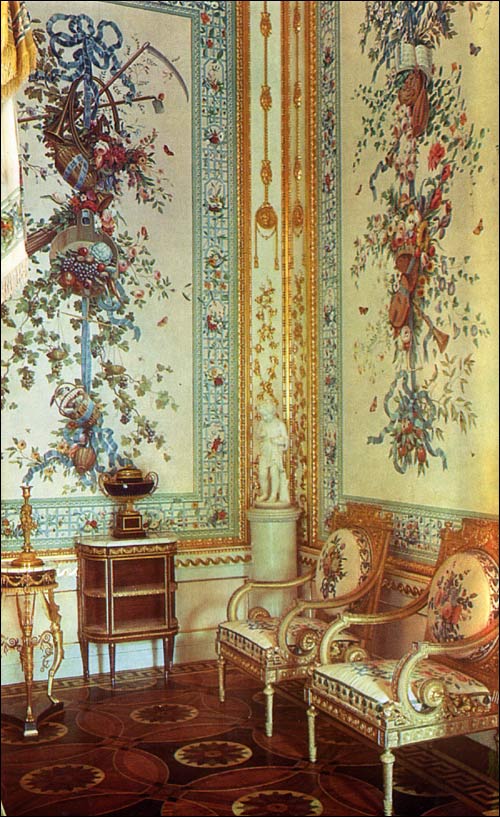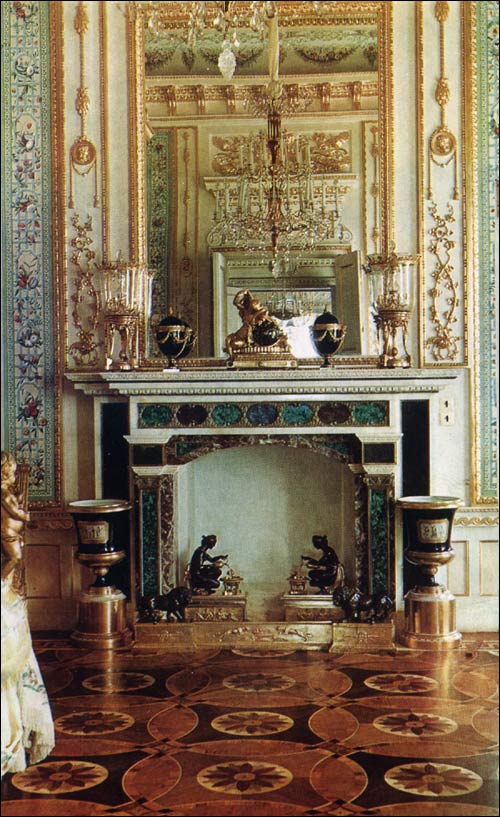Learn about the bats living under the Congress Avenue Bridge in Austin, Texas

|


The State Bedroom of the Empress was decorated by Brenna in imitation of the royal bedchambers of the kings of France. Unlike the severely classical state apartments, this interior is done in what is known as the Louis-Seize style, in vogue on the eve of the French bourgeois revolution of 1789. The walls are ornamented with light gilded mouldings on a white ground, enframing panels of cream-coloured silk painted in tempera with "rural trophies": fruit, flowers, musical instruments and gardening implements within a border of flower-bedecked trelliswork. These panels, as well as the drapery borders executed in colours of rare brilliance and freshness, were done by Johann Jacob Mettenleiter from the sketches of Willem van Leen of Holland, who worked for the royal court in Paris.
The Bedroom ceiling was painted to harmonize with the decor of the walls. It shows an inside view of a pretty trellised bower covered with roses and other flowers, and against the blue sky in the oval openings, peacocks, the symbol of conjugal happiness. The furniture of the State Bedroom is a triumph of the cabinet-maker's art. The magnificent gilded bed, beneath a canopy hung with silk draperies, is exquisitely carved with a variety of motifs: basketfuls of flowers, symbolic of abundance, an altar of love over which cupids hold a wreath of roses, greyhounds, symbolic of faithfulness, sphinxes, a symbol of longevity, signs of the zodiac, and other symbols and emblems typical of eighteenth-century art. Equal perfection of design and craftsmanship marks the dainty Duchesse-type couch and the armchairs with the owners' joined cypher on their backs. This, and a few other sets of furniture made by Henri Jacob for the Pavlovsk Palace, have no analogies in our other museums. In a hood-case near the window is the famous toilet set made at Sevres in 1782 on the order of Marie Antoinette for a present to Maria Feodorovna. The set comprises over sixty pieces of "jewelled Sevres" painted in gold over underglaze blue with classical. subjects, and having applied gold decorations of the utmost delicacy, with tiny drops of coloured enamels fused onto the surface to imitate precious stones. This technique was considered at the time to be the last word in the art of porcelain decoration. Of superb craftsmanship is the oval mirror adorned with the figures of the Three Graces in biscuit porcelain. Models for these sculptures and for the playing amorini on the porcelain boxes were made by Louis Simon Boizot, director of sculpture at the Sevres factory. The gold and bronze decorations are the work of Jean Claude Duplessis, goldsmith to the French court, and the jewelling was done by the enameller Joseph Cotteau, the inventor of this technique. This masterpiece which won world-wide fame, cost the royal exchequer 60,000 livres, and no other set like it was made ever since. The chandelier in the State Bedroom is one of the best works by St Petersburg craftsmen of the period (late eighteenth century). Its light bronze frame seems to melt away amidst the beautifully sparkling festoons of crystal drops full of prismatic colour, whose effect is enhanced by the stem of ruby glass. The use of coloured glass in chandeliers is a distinctly Russian technique.    |

|





